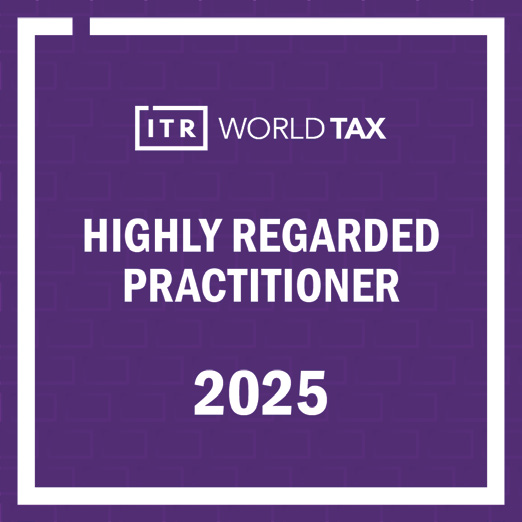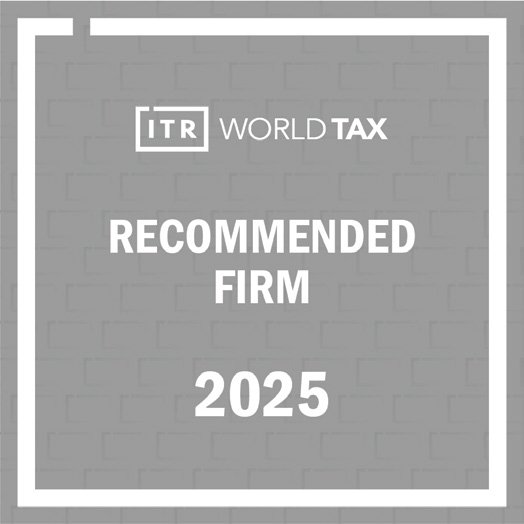Menilik Arah Reformasi Kepabeanan dan Cukai

Direktorat Jenderal Bea dan Cukai (DJBC) memiliki tugas dan fungsi yang cukup strategis, tetapi juga dilematis. Sebab, instansi di bawah Kementerian Keuangan ini tak hanya bertanggung jawab terhadap pengumpulan penerimaan perpajakan, tetapi juga mengemban amanat sebagai fasilitator perdagangan dan pengawasan kepabeanan (pencegahan barang selundupan). Semua tugas itu harus dilaksanakan oleh DJBC sebagai aparat fiskal tanpa mengorbankan fungsi utamanya, yakni pelayanan dan pengawasan.
Dalam melaksanakan tugasnya, DJBC juga dihadapkan pada sejumlah tantangan yang semakin berat, mulai dari kenaikan target penerimaan, perubahan tren importasi, perlambatan ekonomi, hingga keberlanjutan reformasi birokrasi. Tak hanya berbekal optimisme, sejumlah strategi pun disiapkan DJBC untuk memastikan seluruh amanat terlaksana dengan baik. Semua itu tergambar jelas dalam wawancara MUC Tax Guide dengan Direktur Jenderal Bea dan Cukai Heru Pambudi sebagai berikut:
Sejauh mana proses reformasi birokrasi yang dilakukan DJBC?
Sebagaimana diketahui bahwa melalui kick-off yang dilakukan oleh Menteri Keuangan pada tanggal 20 Desember 2016 menandai dimulainya Program Penguatan Reformasi Kepabeanan dan Cukai. Tuntutan masyarakat kepada DJBC yang terus meningkat disadari menjadi pendorong untuk dilaksanakannya reformasi ini. Fasilitasi dan kemudahan ekspor-impor, kecepatan arus logistik, perlindungan dari masuknya barang berbahaya seperti narkotika dan barang larangan lainnya, sampai dengan optimalisasi penerimaan negara, menjadi peran DJBC yang ingin dikuatkan melalui reformasi yang dilakukan saat ini. Proses reformasi yang berjalan saat ini telah melewati kuartal I. Capaian-capaian singkat atau Quick wins sebagai milestone yang menggambarkan bahwa secara keseluruhan program-program yang dirancang dalam penguatan reformasi kepabeanan dan cukai ini achievable dan berjalan pada track yang semestinya, telah berhasil dicapai dan telah dilaporkan kepada Menteri keuangan per 3 April 2017.
Apa saja yang menjadi fokus pembenahan dalam reformasi tersebut?
Penguatan reformasi DJBC di tahun 2017 ini menempatkan penguatan budaya organisasi dan peningkatan integritas sebagai roh penggerak perubahan dengan area-area yang disasar, dan yang menjadi tujuan perubahan dari program di atas adalah perbaikan di bidang Organisasi, Tatalaksana, Peraturan Perundangan, Sumber Daya Manusia, Pengawasan, Akuntabilitas, Pelayanan Publik, serta Mindset/cultural set.
Terkait reformasi birokrasi dan kelembagan, apa yang diperkuat oleh DJBC?
Disadari bahwa diperlukan internalisasi yang terprogram dan masif terhadap Program Penguatan Reformasi Kepabeanan dan Cukai yang sedang dilaksanakan saat ini kepada seluruh pegawai DJBC guna menumbuhkan engagement dan ownership sampai ke level pegawai yang terendah sekali pun. Di samping itu, guna semakin memperkuat, keterlibatan pihak ekstenal DJBC pun diikutsertakan melalui observer dan adviser yang meliputi kalangan praktisi, akademisi, organisasi internasional sampai dengan dunia usaha.
Reformasi birokrasi bukan yang pertama kali dilakukan DJBC. Apa yang membedakan reformasi kelembagaan kali ini?
Ya, salah satu hal yang membedakan reformasi kali ini dengan reformasi-reformasi sebelumnya adalah adanya sinergi antara aparat fiskal Direktorat Jenderal Pajak (DJP) dan DJBC. Sinergi ini diwujudkan dalam bentuk joint program DJBC dan DJP, mulai dari joint data, joint analysis, joint audit, sampai dengan joint collection. Dengan adanya sinergi ini diharapkan tercipta optimalisasi pengawasan secara bersama-sama oleh DJBC dan DJP sehingga terjadi penurunan upaya menghindari pembayaran pajak dan bea masuk/bea keluar/cukai yang berdampak pada peningkatan penerimaan negara. Terkait joint data sejauh ini telah berjalan dengan baik. Aturan sebagai payung hukum pun telah dibuat antara Ditjen BC dan Ditjen Pajak.
Apakah ada keluhan dari user atau dunia usaha terkait integrasi data kepabeanan dan pajak?
Sampai saat ini belum ada keluhan.
Selain dengan DJP, DJBC juga menjalin kerja sama dengan Kementerian Kelautan dan Perikanan (KKP). Bagaimana teknisnya?
Pada prinsipnya kerjasama antara DJBC dengan Kementerian Kelauatan dan Perikanan telah beberapa kali dilakukan, tema yang diambil antara lain terkait dengan illegal fishing, peningkatan pengawasan impor dan ekspor atas hasil laut yang dilindungi melalui forum CITES, peningkatan kerja sama intelijen, serta pertukaran informasi terhadap illegal trading di sektor perikanan dan hasil laut.
Hal ini dibuktikan dengan beberapa tangkapan DJBC, atas komoditi hasil laut berupa ekspor baby lobster ilegal, yang sebagian merupakan kerja sama DJBC dengan KKP, termasuk penegahan ekspor komoditi hasil laut ilegal lainnya. Kerja sama yang telah terjalin selama ini akan terus dibina dan ditingkatkan dengan tentunya mempertimbangkan kerja sama dengan instansi penegak hukum lainnya seperti kepolisian dan TNI.
Namun kerjasama yang baik antara DJBC dan KKP sampai saat ini secara khusus belum dituangkan secara formal dalam MoU atau bentuk perjanjian lainnya. Kerjasama tertulis saat ini antara DJBC dan KKP hanya terbatas pada nota kesepahaman bersama dengan Kementerian Perdagangan, Badan POM dan Karantina tentang komoditi yang diatur tataniaganya dan pengawasan barang beredar kemudian selanjutnya pada kerjasama pembentukan Satgas anti-illegal fishing oleh KKP. Akan tetapi dalam waktu yang tidak terlalu lama, melalui program Indonesia Single Risk Manajemen (ISRM), DJBC beserta Kementerian/Lembaga lainnya termasuk dengan KKP akan melakukan kerjasama dalam peningkatan pengawasan dan pelayanan dalam bentuk manajemen risiko yang terintegrasi. Melalui program tersebut diharapkan pengawasan dan pelayanan DJBC dan KKP khususnya di Bidang Kelautan dan Perikanan akan semakin baik.
Bagaimana DJBC menyeimbangkan, antara kepentingan proteksi dan mendorong penerimaan dengan upaya mendukung dunia usaha dalam setiap kebijakannya?
Salah satu kebijakan untuk menjawab hal ini adalah melalui pengembangan Sistem kepatuhan Pengguna Jasa (SKPJ) yang saat ini sedang dibangun. SKPJ merupakan pengembangan dari ISRM yang merupakan tools engine yang dimiliki oleh DJBC untuk memetakan risiko importir/pengguna jasa sehingga dapat menyeimbangkan antara pelayanan dan pengawasan. SKPJ mendorong semakin banyak pengguna jasa yang masuk dalam kategori patuh sehingga bisa mendapatkan pelayanan yang cepat dan maksimal dengan pengawasan yang minimal dan selektif. Dengan begitu diharapkan kepentingan untuk melakukan proteksi dengan tetap berfokus pada penerimaan dapat diseimbangkan seiring dengan upaya mendukung dunia usaha dan menjaga iklim investasi yang kondusif.
Bagaimana dampak kebijakan kenaikan tarif pita cukai hasil tembakau terhadap penerimaan sejauh ini?
Kebijakan tarif cukai hasil tembakau yang mulai diberlakukan pada tahun 2017 dengan kenaikan rata-rata sebesar 10,54%, belum memberikan dampak positif terhadap penerimaan cukai selama kuartal I. Hal ini terjadi mengingat adanya perubahan pola penerimaan cukai hasil tembakau pasca diberlakukannya PMK-20/PMK.04/2015. Berdasarkan data, penerimaan cukai hasil tembakau selama kuartal I mengalami penurunan sebesar 12,85% (yoy). Diharapkan dampak positif kebijakan cukai terhadap kinerja penerimaan mulai stabil pada kuartal II dan kuartal III dan meningkat secara signifikan pada akhir tahun.
Bagaimana dengan target tahun 2017, apakah masih optimis tercapai hingga akhir tahun?
DJBC tetap optimis target penerimaan tahun 2017 sebesar Rp 191.23 triliun dapat tercapai sampai dengan akhir tahun. Hal ini didasari beberapa hal, di antaranya penerimaan bea masuk yang sampai dengan kuartal I 2017 sebesar Rp7,72 triliun atau 22,9% dari target. Devisa impor sebagai taxbase penerimaan bea masuk pada kuartal I 2017 ini meningkat 13.9% dan diperkirakan sampai akhir tahun akan meningkat (lebih baik dari tahun 2016) sejalan dengan asumsi pertumbuhan ekonomi sebesar 5,1%. Meskipun dari sisi utilisasi FTA juga meningkat—dari 2016 sebesar 26,6% menjadi 27,4% pada 2017—dan berpotensi mengurangi penerimaan bea masuk, namun dengan upaya ekstra dan peningkatan pengawasan serta penindakan barang ilegal yang secara gencar dilakukan, DJBC optimis (target) penerimaan dari bea masuk 2017 dapat tercapai.
Realisasi penerimaan cukai sampai dengan kuartal I 2017 sebesar Rp 6,92 triliun atau 4,4% dari target 2017. Penerimaan cukai memang rendah pada kuartal I sebagai dampak pemberlakukan PMK Nomor 20/2015 tentang pelunasan cukai. Namun demikian data penerimaan per 14 April 2017 menunjukkan bahwa penerimaan cukai sudah mulai rebound, yaitu mencapai Rp12,14 triliun atau 7,72%, lebih tinggi dari periode yang sama tahun 2016. Peningkatan tarif cukai hasil tembakau (CHT) tahun 2017 sebesar rata-rata tertimbang 10,54% diharapkan dapat mendorong tercapainya target cukai 2017, meskipun dari sisi produksi rokok diperkirakan turun sebesar 2%. Hal yang masih menjadi kendala adalah belum dapat dipungutnya penerimaan cukai lain (kemasan plastik) sampai dengan kuartal I 2017, karena belum mendapatkan persetujuan dari DPR.
Sementara untuk penerimaan bea keluar sampai kuartal I 2017 sudah mencapai Rp0,84 triliun atau 248% dari target 2017. Hal ini disebabkan dalam penyusunan target bea keluar mengasumsikan ekspor mineral dilarang pada 2017. Dengan adanya kebijakan relaksasi ekspor mineral, maka penerimaan bea keluar akan jauh melebihi target yang ditetapkan dalam APBN 2017, mengingat PT AMNT sudah melakukan ekspor sejak awal April 2017 dan PT Freeport sudah mendapatkan persetujuan IUPK sementara (dapat melakukan ekspor sampai dengan 10 Oktober 2017) , yang diperkirakan mulai ekspor bulan Mei 2017.
Kebijakan apa yang akan dikeluarkan untuk mendorong penerimaan kepabeanan dan cukai?
Kebijakan-kebijakan untuk mendorong penerimaan tahun 2017 antara lain:
a. Pemantauan ketat kondisi ekonomi (ekspor impor) & menyiapkan mitigasinya
b. Pemberian stimulus prosedural (peningkatan kelancaran arus barang) bagi importir kredibel
c. Peningkatan penindakan barang kena cukai illegal
d. Mendorong penambahan objek barang kena cukai baru
e. Peningkatan pengawasan atas ekspor Barang Kena Bea Keluar (Uji Jenis dan Kadar)
f. Perbaikan proses pemungutan penerimaan melalui program reformasi DJBC:
- Verifikasi penetapan tarif & nilai pabean
- Eksaminasi pemeriksaan fisik
- Penguatan penelitian ulang
- Validasi penggunaan Surat Keterangan Asal (SKA) untuk importasi menggunakan skema Free Trade Agreement (FTA).
Bagaimana dengan rencana perluasan objek cukai? Apakah sudah ada item baru yang bisa dikenakan cukai dalam waktu dekat?
Tahun 2017 telah ditetapkan dalam APBN dengan target penerimaan untuk cukai lainnya sebesar Rp1,6 triliun. Terkait hal tersebut Kementerian Keuangan dalam hal ini DJBC dan BKF tengah menyusun regulasi untuk pengenaan cukai terhadap kantong plastik. Adapun untuk item baru masih dalam tahap pembahasan terhadap beberapa barang yang berpotensi menjadi objek cukai baru.
DJBC sudah mempersiapkan perangkat hukum pemungutan objek barang kena cukai tersebut, namun sampai saat ini masih terkendala izin prinsip dari DPR RI. Berdasarkan hasil rapat dengan komisi XI DPR RI tanggal 18 April 2017, dalam waktu dekat akan diagendakan kembali pembahasan terkait penambahan objek barang kena cukai baru antara pemerintah dan Komisi XI DPR RI.


